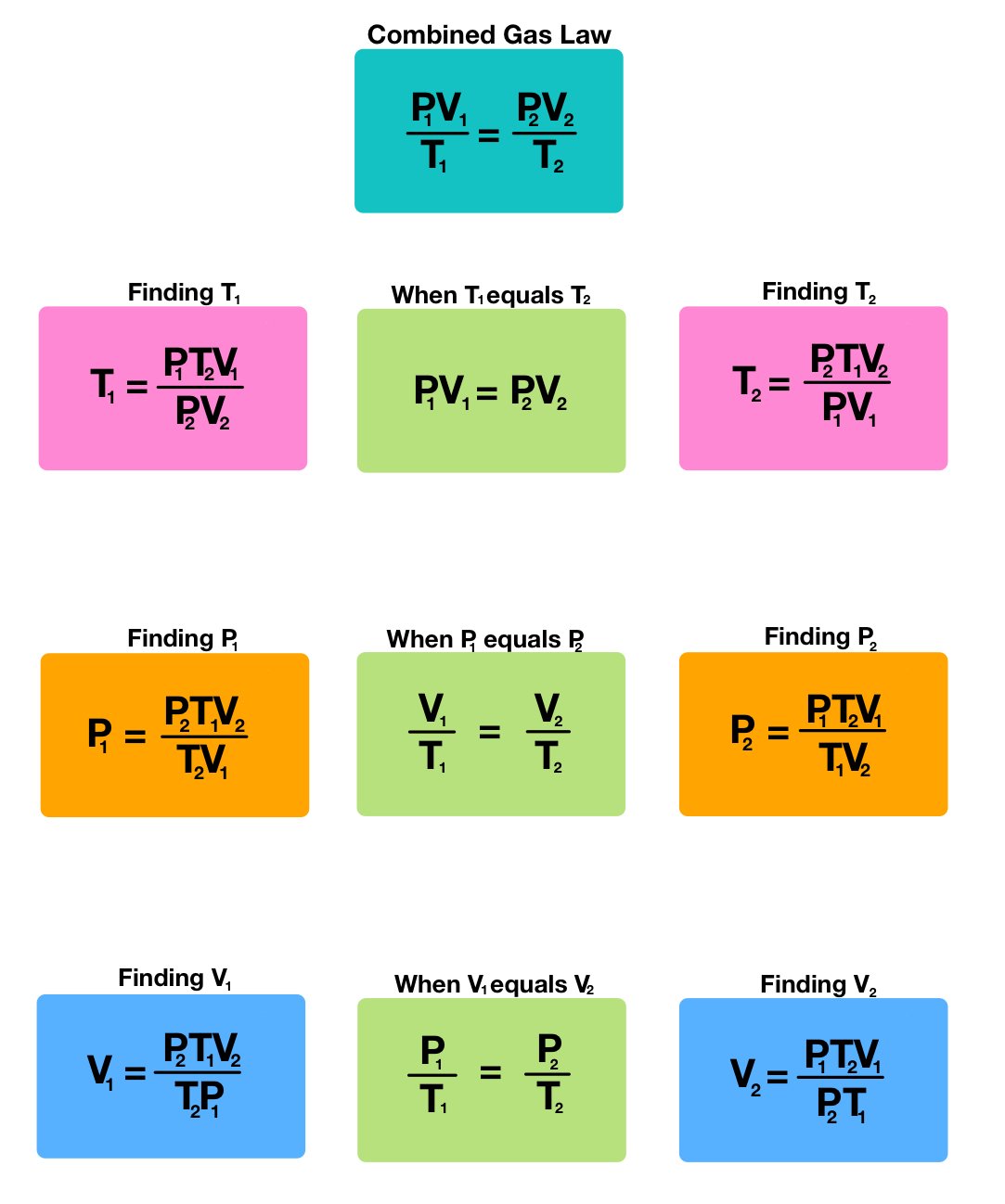Are you struggling with gas law calculations? The combined gas law calculator is here to simplify your work. By entering the initial and final values of pressure, volume, and temperature, you can instantly compute the unknown variable. Say goodbye to manual calculations and hello to accuracy and efficiency. Whether you’re a student, scientist, or industry professional, this tool will be your new best friend in solving complex gas law problems. Let’s dive into the world of gas laws and make your calculations a breeze with the combined gas law calculator.
The Amazing Combined Gas Law Calculator: Your Handy Tool for Gas Calculations
Do you find gas calculations challenging? Look no further, as the combined gas law calculator is here to save the day! In this article, we will delve into the world of gas laws and how this powerful tool can simplify your calculations and make your life easier. Let’s explore everything you need to know about the combined gas law calculator.
Understanding the Basics of Gas Laws
Before we dive into the specifics of the combined gas law calculator, let’s brush up on some basic concepts. Gas laws are a set of fundamental principles that describe the behavior of gases under various conditions. These laws help scientists and engineers make predictions and solve problems related to gases.
One of the key gas laws is the combined gas law, which combines Boyle’s Law, Charles’s Law, and Gay-Lussac’s Law into a single equation. This law allows us to relate the pressure, volume, and temperature of a gas sample before and after changes occur.
Introducing the Combined Gas Law Calculator
The combined gas law calculator is a nifty tool that takes the hassle out of solving complex gas law problems by automating the calculations for you. Whether you’re a student studying chemistry or a professional working in the field of thermodynamics, this calculator can streamline your work and improve your accuracy.
With the combined gas law calculator, you can input the initial pressure, volume, and temperature of a gas sample, as well as the changes that occur, and obtain the final values with just a few clicks. This saves you time and reduces the risk of errors that can occur when performing manual calculations.
How to Use the Combined Gas Law Calculator
Using the combined gas law calculator is simple and straightforward. Follow these easy steps to solve your gas law problems with ease:
Step 1: Input the Initial Values
Enter the initial pressure, volume, and temperature of the gas sample in the designated fields. Make sure to use the correct units (e.g., atmospheres for pressure, liters for volume, and Kelvin for temperature).
Step 2: Specify the Changes
Indicate the changes that occur in the gas sample, such as a change in pressure, volume, or temperature. Enter these values in the corresponding fields provided by the calculator.
Step 3: Calculate the Final Values
Click on the “Calculate” button, and voila! The combined gas law calculator will work its magic and provide you with the final pressure, volume, and temperature of the gas sample after the changes have taken place.
Benefits of Using the Combined Gas Law Calculator
There are several advantages to using the combined gas law calculator for your gas calculations:
Accuracy
The calculator ensures precision in your calculations, reducing the likelihood of errors that can occur when performing manual computations.
Efficiency
By automating the calculations, the calculator saves you time and effort, allowing you to focus on analyzing the results rather than crunching numbers.
Convenience
Whether you’re in the classroom, laboratory, or field, the combined gas law calculator is a handy tool that you can access anytime, anywhere.
Real-World Applications of the Combined Gas Law Calculator
The combined gas law calculator is not just a theoretical tool—it has practical applications across various industries and fields. Here are some real-world scenarios where the calculator can be invaluable:
Engineering
Engineers use the combined gas law calculator to design and analyze systems that involve gases, such as HVAC systems, engines, and chemical reactors.
Medical Science
In medical science, the calculator is used to determine the optimal conditions for storing and transporting medical gases and pharmaceuticals.
Environmental Science
Environmental scientists rely on the calculator to model and predict the behavior of gases in the atmosphere, aiding in climate change research and air quality assessments.
The combined gas law calculator is a powerful tool that simplifies gas calculations and enhances your understanding of gas laws. Whether you’re a student, scientist, or professional, this calculator can be your trusted companion in solving complex gas law problems with ease and efficiency.
So, the next time you’re faced with a tricky gas calculation, remember to turn to the combined gas law calculator for help. Happy calculating!
Combined Gas Law Calculator
Frequently Asked Questions
What is the combined gas law calculator used for?
The combined gas law calculator is a tool used to calculate the final pressure, volume, or temperature of a gas sample when initial conditions change according to the combined gas law formula.
How does the combined gas law calculator work?
The combined gas law calculator applies the combined gas law formula, which relates the pressure, volume, and temperature of a gas sample under different conditions. By inputting the initial values and the changes, the calculator computes the final value using the formula.
Can the combined gas law calculator be used for all gases?
Yes, the combined gas law calculator can be used for any ideal gas, provided that the conditions are within the range of validity for the ideal gas law. It is a versatile tool that works for a variety of gases.
Is it necessary to know the initial conditions to use the combined gas law calculator?
Yes, knowing the initial conditions of pressure, volume, and temperature is essential to use the combined gas law calculator effectively. Without the initial values, the calculator cannot calculate the final state of the gas sample accurately.
Final Thoughts
In conclusion, the combined gas law calculator simplifies complex gas law calculations. By utilizing this tool, users can quickly determine the relationships between pressure, volume, and temperature of a gas sample. Whether for educational purposes or practical applications, the calculator streamlines the process and reduces the likelihood of errors. Embrace the convenience and accuracy offered by the combined gas law calculator for all your gas law calculations.




